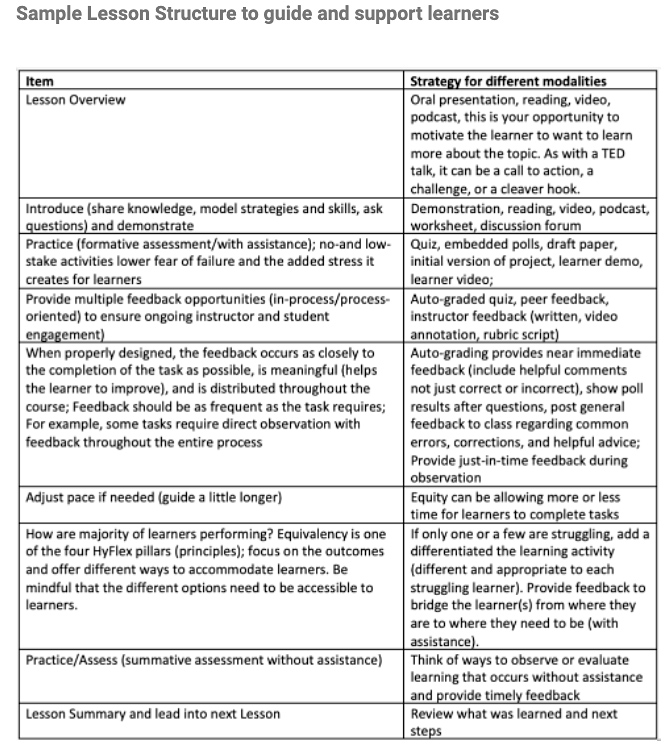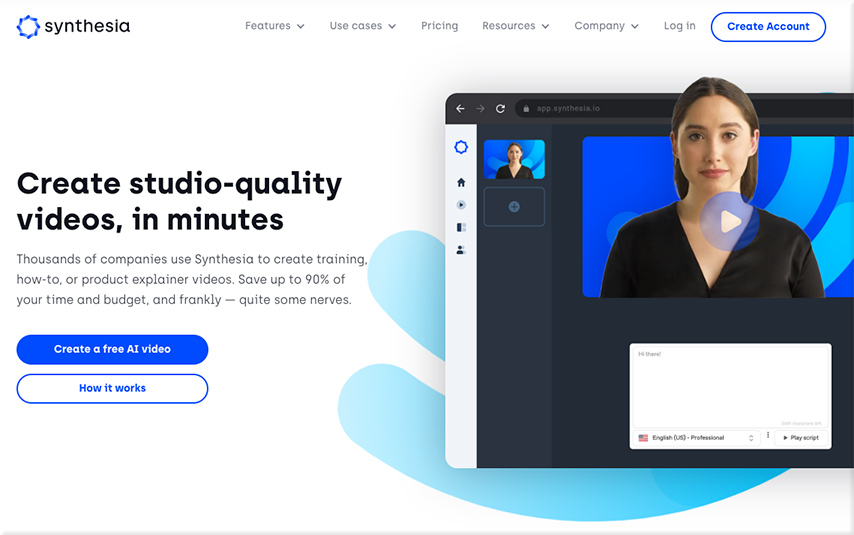The future of video entertainment: Immersive, gamified, and diverse — from mckinsey.com
“There’ll be a blurring of the lines between things we watch and things we play”
From DSC:
For those of you college students who are trying to determine what you enjoy doing, I wanted to pass some items along that may be helpful if you are interested in game development, film, and/or TV-related production.
Some friends recommended knowing how to use the following tools, but I realize one could dive very deep with these tools:
Excerpt from Unity.com
.
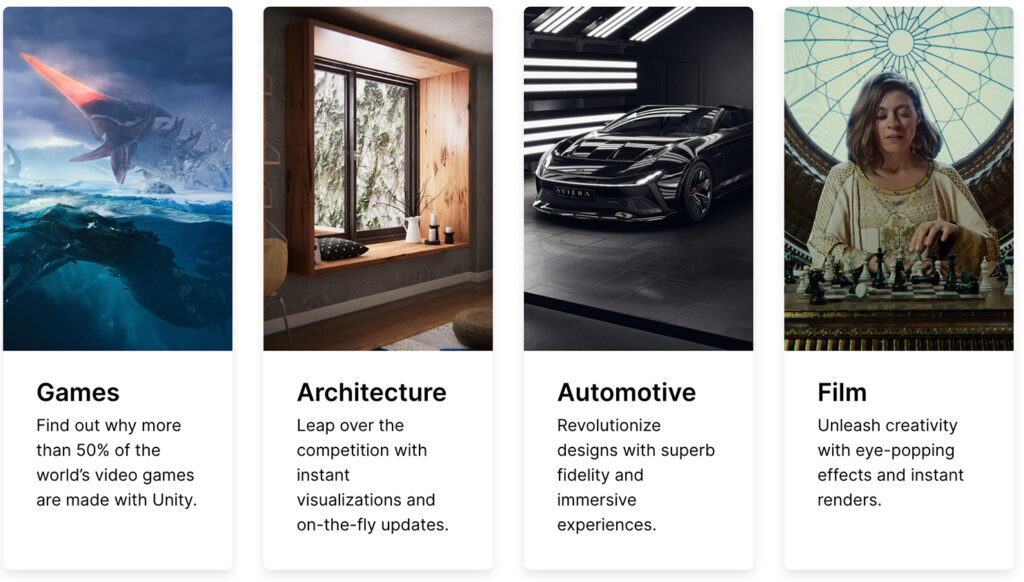
Additional tip:
- Stay within what your budget can provide. Making a film about five students on campus is doable. Making a Star Wars-type movie isn’t — unless you are making a spoof or presenting a knowingly-bad movie.
I just wanted to pass these items along.
Also relevant/see:
- Video streaming in the era of framerate wars — from provideocoalition.com by Allan Tépper
Addendums on 7/3/22:
- Dissecting MetaHuman – A Realistic Avatar Framework — from xrtoday.com
Epic Games democratises avatar creation with integrated Unreal Engine tools
Apple Starts Connecting the Dots for Its Next Big Thing — from nytimes.com by Tripp Mickle and Brian X. Chen
The company has enlisted Hollywood directors like Jon Favreau to help its effort to create products that blend the physical and virtual worlds.
Excerpt:
Nearly 15 years after the iPhone set off the smartphone revolution, Apple is assembling the pieces for what it hopes will become its next business-altering device: a headset that blends the digital world with the real one.
The company has enlisted Hollywood directors such as Jon Favreau to develop video content for a headset that it is expected to ship next year, according to three people familiar with that work. Mr. Favreau, an executive producer of “Prehistoric Planet” on Apple TV+, is working to bring that show’s dinosaurs to life on the headset, which looks like a pair of ski goggles and aims to offer virtual- and augmented-reality experiences, these people said.
Speaking of the future, here’s another item regarding what’s coming down the pike:
- AT&T Is Working on 20-Gigabit Fiber to Homes, Could Launch Next Year — from cnet.com by Eli Blumenthal
What The Future Of Technology In The Workplace Means For Office Design And Operations — from workdesign.com by Mara Hauser
Excerpt:
Advances in technology continue to influence the workplace as corporate entities and coworking operators are confronted with modern challenges surrounding productivity and collaboration. We lead teams to execute intentional designs that reflect brand vision and produce lively, productive workspaces. With the growing demand from employees for workplace flexibility, these technological advancements must be reflected in both office design and business practices in order to add value and ultimately achieve operational excellence.
.
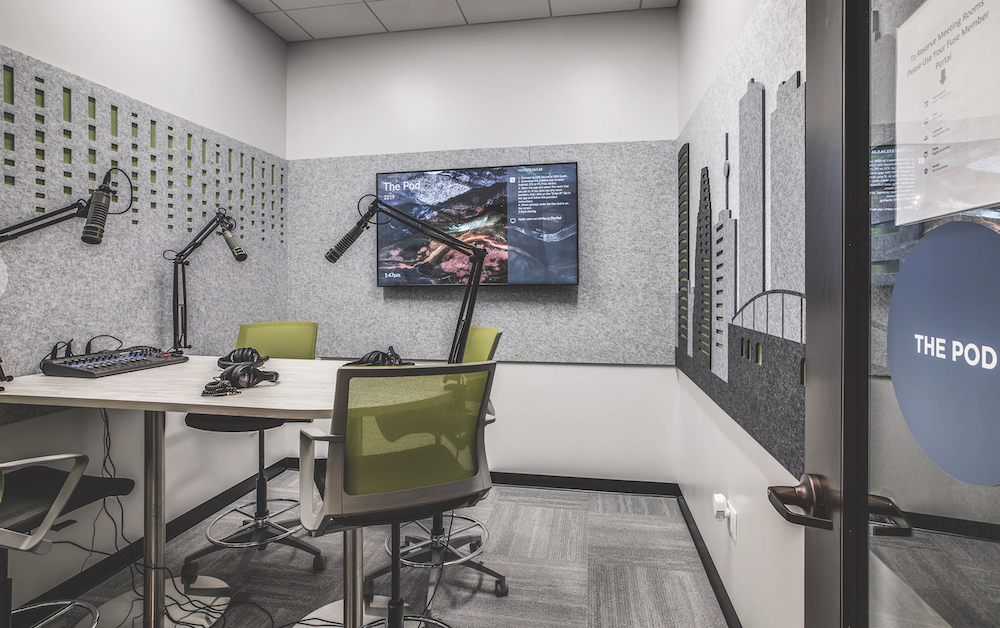 Podcasting studio at FUSE Workspace in Houston, TX.
Podcasting studio at FUSE Workspace in Houston, TX.
A Podcast Listening Strategy for Learning — from learntrepreneurs.com by Eva Keiffenheim
Three steps to make the most of your podcast time
Excerpt (emphasis DSC):
Use apps that help you remember more
You won’t remember much from a podcast if you only listen to it. Your brain needs repetition and elaboration to make new knowledge stick.
Unlike books, you can’t highlight audio?—?or can you?
I listen to my podcasts while biking or walking. Hence, an extremely uncomfortable situation to open a notepad or Roam Research whenever I hear an interesting idea.
But two applications have transformed how I listen to podcasts: Snipd and Airr. Both are audio highlighting tools.
The Key Idea All Great Books on Learning Have in Common — from learntrepreneurs.com by Eva Keiffenheim
And how you can implement the powerful way to learn.
.
Grandpa Creates Hologram Twin For Future Grandkids Using VR — from vrscout.com by Kyle Melnick
Not even death will stop this tech-savvy grandfather from meeting his great-grandchildren.
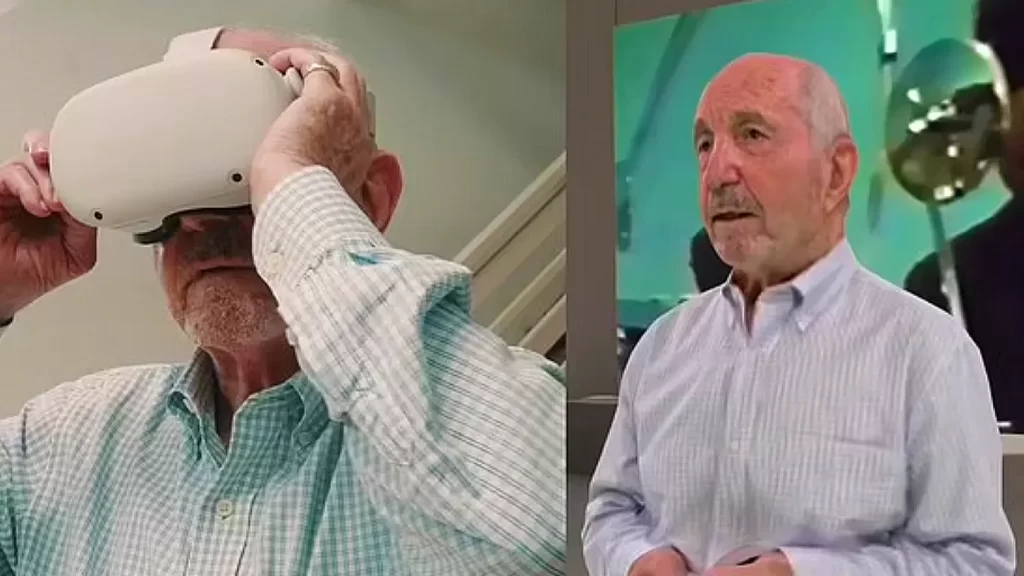
“I think it is a wonderful way to preserve my family’s history for future generations,” said Jerry while speaking to Jam Press. “To see myself like that, is just mind-blowing — it feels like watching a movie. By not just reading the words as in my memoir but to actually get the chance to see and hear me recalling the stories is just magical.”
Also from Kyle Melnick:
How VR/AR Technology Is Being Used To Treat Autism
XRHealth brings its unique VR/AR therapy to the United States.
Excerpt:
Previously available in Australia, the technology has been used to treat the effects of autism, from anxiety and stress to attention, memory, mobility/coordination, and frustration tolerance. XRHealth’s healthcare platform offers a variety of professional services. This includes one-on-one meet-ups with XRHealth therapists as well as virtual group sessions, all of which accessible remotely using modern VR headsets.









